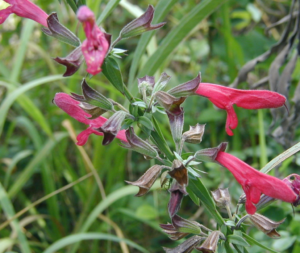Rare Texas Sage on the Brink: Endangered Species Act Consideration
A striking native of the Texas Edwards Plateau, the big red sage, (Salvia pentstemonoides), faces a critical juncture as the U.S. Fish and Wildlife Service (USFWS) proposes it for endangered status. Once thought extinct after its 1840s discovery, the vibrant reddish-purple flowering plant was rediscovered in 1980. However, its wild populations have plummeted from 14 to a mere seven confirmed locations across Kendall, Kerr, Bandera, and Real counties.
Despite its cultivation success and nursery availability, wild big red sage clings to existence along waterways, typically on bluffs and banks. The USFWS Southwest Regional Director, Amy Lueders, emphasizes the urgency, stating the goal is for the sage to remain a vital part of Texas’ natural heritage.
The Lady Bird Johnson Wildflower Center is at the forefront of conservation efforts. Dr. Jonathan Flickinger, their Conservation Collections Manager, identifies key threats: intense herbivory, particularly from white-tailed deer, and the impact of human collectors drawn to its rarity. Habitat loss due to development, drought, and even flooding further endanger the remaining populations. Historically found in a broader range, the sage’s current water-dependent habitat limits its distribution.
The Wildflower Center’s multifaceted approach, funded by Texas Parks and Wildlife, includes extensive surveys for undiscovered populations and securing access to historical sites. Currently they have collected seeds from six of the seven known locations to establish a vital seed bank – an “insurance policy” against extinction.
Current research delves into the sage’s reproductive biology, addressing concerns about inbreeding within the small, isolated populations. Genetic analysis reveals wild populations possess significantly higher genetic diversity than cultivated ones, a crucial factor for adaptation. Experimental controlled crosses aim to understand and potentially enhance the plant’s reproductive success.
Past reintroduction attempts highlight the challenges of restoring wild populations. While protected plants in a 2005 effort survived initially, unprotected ones did not, underscoring the vulnerability of the species.
The proposed Endangered Species Act listing offers a critical opportunity to secure the future of this charismatic Central Texas native. Further research and dedicated conservation efforts, like those spearheaded by the Wildflower Center, are essential to ensure the big red sage continues to grace the Texas landscape.
Westward has experienced biologists who perform land surveys for environmental compliance.


